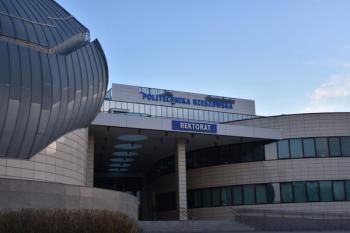
- The Application Notebook-08-02-2011
- Volume 0
- Issue 0
Extraction of Vitamin D Metabolites from Human Plasma Using ISOLUTE SLE+ for LC–MS–MS Analysis
Biotage Application Note
This application note describes a simple and robust procedure for the extraction of vitamin D metabolites from human plasma at clinically significant concentrations using ISOLUTE SLE+ supported liquid extraction plates. Supported liquid extraction is an efficient alternative to traditional liquid-liquid extraction (LLE) for bioanalytical sample preparation.
Introduction
Vitamin D deficiency causes bone softening diseases like rickets but has also been linked to cancer, M.S., arthritis, diabetes, Parkinson's and Alzheimer's disease. The accurate sampling and subsequent analysis of Vitamin D levels has become highly regulated and of significant clinical concern, with more sensitive, simplified and robust techniques required worldwide.
Extraction Conditions
This application note outlines a high throughput procedure using ISOLUTE SLE+ supported liquid extraction plates (part #8200200-P01) for processing 100 μL plasma samples. Method parameters have been optimized to maximize analyte recovery and minimize ion suppression.
Sample: Human plasma (100 μL).
Sample pre-treatment: Add plasma (100 μL) to a mixture of HPLC grade water (50 μL) and isopropanol (propan-2-ol) (50 μL) and mix for 10 seconds.
Sample loading: Load pre-treated sample (200 μL total volume) onto the ISOLUTE SLE+ plate, leave the samples to absorb for 5 minutes under gravity and then apply a pulse of vacuum for 2–5 seconds if not fully absorbed onto sorbent.
Analyte elution: Apply heptane (500 μL), wait 5 min to allow the solvent to soak, apply a short pulse of vacuum if solvent not fully absorbed. Repeat application of heptane (500 μL), allow to soak for 5 min and then apply another short pulse of vacuum.
Post extraction: Evaporate eluate to dryness without heat and reconstitute in 0.1% formic acid in HPLC grade water/0.1% formic acid in methanol (20:80 v/v, 100 μL). Cap samples and vortex gently for 60 seconds.
Results
All results show recoveries above 85% with RSDs below 10%, Figure 1 shows the recoveries of all the relevant Vitamin D metabolites. LOQ values are 25 ng/mL with an LOD at 10 ng/mL.
Figure 1: Mean % recoveries of Vitamin D metabolites from human plasma using SLE+ procedure.
Conclusions
This procedure provides for a simplified extraction of Vitamin D metabolites optimized for LC–MS–MS analysis. The use of ISOLUTE SLE+ reduces the need for any off-line steps, incorporating a protein binding disruption step into the process, significantly decreasing sample preparation time.
References
This application note is based on the poster 'Vitamin D and Metabolites: Evaluation of Supported Liquid Extraction (SLE) prior to LC-MS/MS Analysis.', L Williams et al., presented at MSACL, San Diego, California, USA, 5–9 February 2011 (available from
Biotage AB
Kungsgatan 76, SE-753 18 Uppsala, Sweden
tel: +46 18 56 59 00 fax: +46 18 59 19 22
E-mail:
Articles in this issue
over 14 years ago
Fast Determination of Catechins in Teaover 14 years ago
Ultra Fast Analysis of Synthetic Colourantsover 14 years ago
LC Analysis of Aminoglycoside Antibiotics Kanamycin and AmikacinNewsletter
Join the global community of analytical scientists who trust LCGC for insights on the latest techniques, trends, and expert solutions in chromatography.




